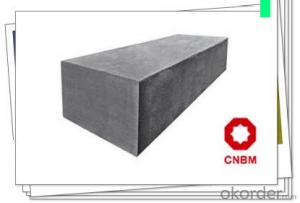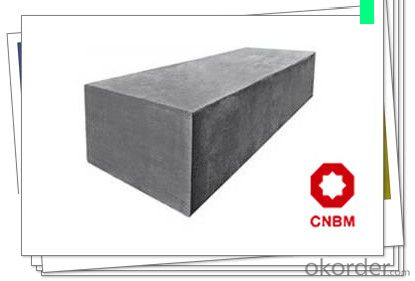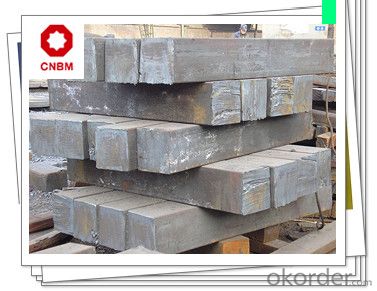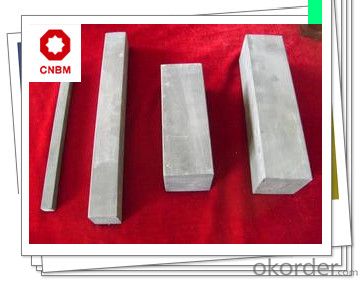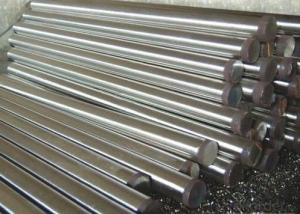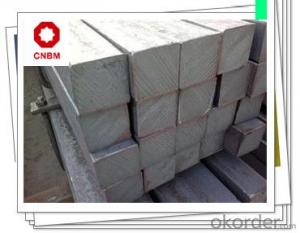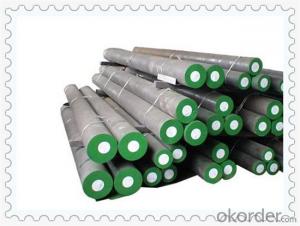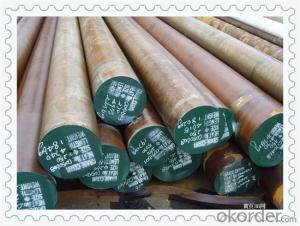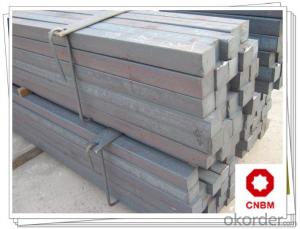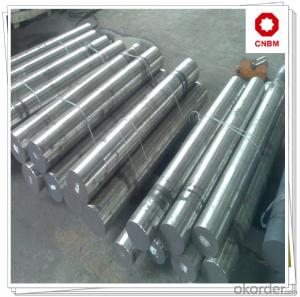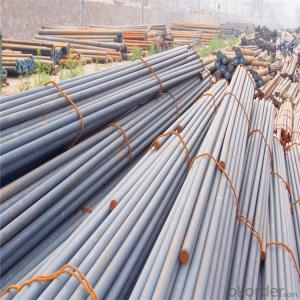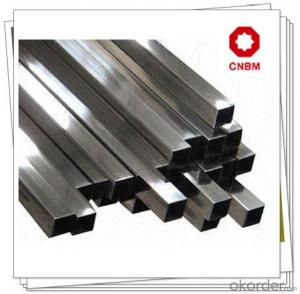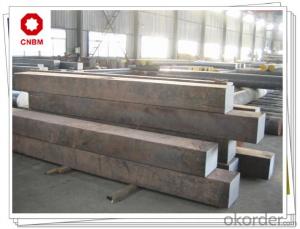Carbon Structural Steel Square Bars SAE1020CR
- Loading Port:
- Shanghai
- Payment Terms:
- TT OR LC
- Min Order Qty:
- 25 m.t.
- Supply Capability:
- 120000 m.t./month
OKorder Service Pledge
OKorder Financial Service
You Might Also Like
Carbon Structural Steel Square Bars SAE1020CR
Product Specification
1, Chemical Composition %
| Grade | C | Si | Mn | S | P | Cr | Ni | Cu |
| SAE1020CR | 0.17-0.24 | 0.17-0.37 | 0.35-0.65 | ≤0.035 | ≤0.035 | ≤0.25 | ≤0.25 | ≤0.25 |
2, Mechanical Properties
| Strength of Extension σb | Yield Strength σs | Elogation δ5 | Reduction of Area ψ | Hardness (no heat treatment) |
| ≥410(42) Mpa | ≥245(25) Mpa | ≥25 % | ≥55 % | ≤156HB |
Application
1, can be used to produce various types of rivet, bolts and welding structural parts.
2, can be used to produce seamless pipes, mold, steel plate, U-steel and joist steel
Product Main Points
1, high quality with competitive price
2, certifictes are available
3, heat treatment specification: tempering, 910 ℃, air cooling
4, heat treat ment: normalizing, annealing, tempering, quenching
5, surface treatment: black, polished, galvanized
6, hot rolled, cold drawn, forged
FAQ
1, Payment Terms:
30% T/T deposit & 70% T/T before delivery.
Irrevocable L/C at sight
2, Trade Terms:
EXW, FOB, CIF, CNF
3, Delivery Time:
Normally 30-40 days. According to quantity.
4, Manufacture or Trading Company:
CNBM is a state-owned fortune global 500 trading company. We have intergrated supply system.
There are about 20 overseas locations in different countries.
Product Show
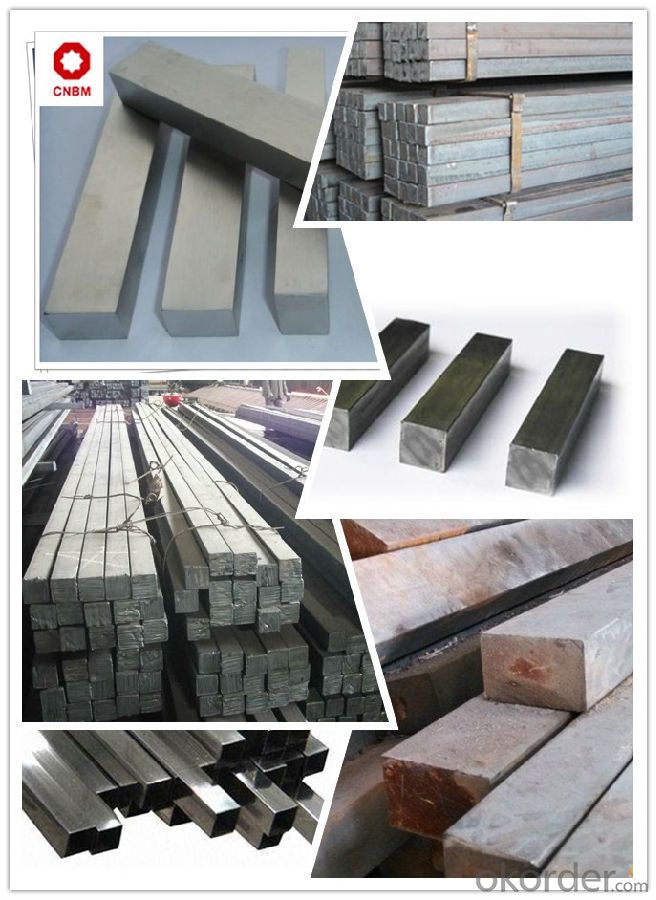
Work Shop

About Us

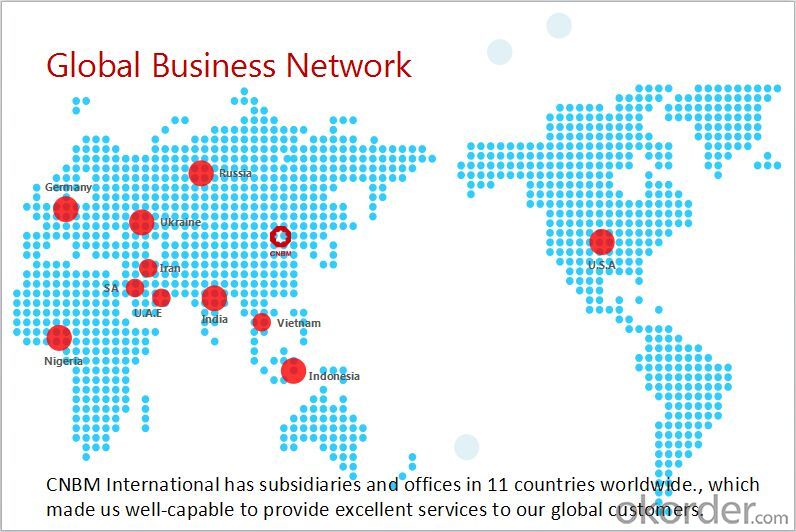
- Q: Are steel round bars suitable for use in the construction industry?
- Yes, steel round bars are commonly used in the construction industry due to their strength, durability, and versatility. They provide structural support in various applications such as reinforcement in concrete, framing, and the creation of beams and columns. Additionally, steel round bars can be easily fabricated, welded, and formed into different shapes, making them a suitable choice for a wide range of construction projects.
- Q: What are the quality control measures for steel round bars?
- Quality control measures for steel round bars typically involve a series of inspections and tests to ensure that the bars meet the required specifications and standards. These measures are crucial to ensure the structural integrity and reliability of the steel bars. Some common quality control measures for steel round bars include: 1. Visual Inspection: This involves a visual examination of the bars to detect any surface defects such as cracks, pits, or rust. It ensures that the bars have a smooth surface finish and are free from any visible imperfections. 2. Dimensional Inspection: This involves measuring the diameter, length, and straightness of the steel bars to ensure they meet the required tolerances. Any deviations from the specified dimensions can affect the performance and fit of the bars in various applications. 3. Chemical Composition Analysis: Steel round bars undergo chemical composition analysis to verify the percentage of various elements present in the steel. This analysis helps ensure that the bars have the correct alloying elements in the right proportions, which directly impacts their mechanical properties and performance. 4. Mechanical Testing: Various mechanical tests are performed on steel round bars to assess their strength, hardness, and other mechanical properties. These tests can include tensile testing, impact testing, and hardness testing. These tests help determine if the bars meet the required strength and durability standards. 5. Ultrasonic Testing: Ultrasonic testing is often used to detect internal defects such as voids, inclusions, or cracks in steel round bars. This non-destructive testing technique uses high-frequency sound waves to identify any flaws that may compromise the structural integrity of the bars. 6. Surface Treatment Inspection: If the steel round bars undergo any surface treatments such as heat treatment or coating, an inspection is conducted to ensure that the treatments are properly applied and meet the required specifications. 7. Certification and Documentation: Quality control measures also include proper documentation and certification of the steel round bars. This ensures traceability and provides evidence that the bars have undergone the required inspections and tests, giving customers confidence in the product's quality. Overall, these quality control measures for steel round bars help ensure that the bars are of high quality, meet the required specifications, and are suitable for their intended applications.
- Q: Difference between cold drawn round steel and round steel
- The free torsion rigidity of hot rolled steel is higher than that of cold rolled steel, so the torsion resistance of hot rolled steel is better than that of cold rolled steel.
- Q: Can steel round bars be used for making mining equipment?
- Yes, steel round bars can be used for making mining equipment. The strength and durability of steel make it a suitable material for manufacturing various mining equipment such as drill rods, excavator buckets, and support structures due to its high load-bearing capacity and resistance to wear and tear.
- Q: What are the advantages of using wear-resistant steel round bars?
- Wear-resistant steel round bars offer numerous benefits: 1. Enhanced durability: These round bars are specifically designed to withstand high levels of abrasion and wear. They have a high hardness level, which makes them resistant to surface damage caused by friction, impact, or scraping. As a result, their lifespan is extended, reducing the need for frequent replacements. 2. Increased strength: Wear-resistant steel round bars possess exceptional strength properties, allowing them to withstand heavy loads and extreme conditions. This makes them suitable for various applications in industries like mining, construction, manufacturing, and transportation, where strength and resilience are crucial. 3. Improved safety: By using wear-resistant steel round bars, a safer working environment is ensured. Their high resistance to wear minimizes the risk of accidents and injuries caused by equipment failures or structural damage. This is particularly important in industries involving heavy machinery, tools, or structures. 4. Cost-effectiveness: Although wear-resistant steel round bars may have a higher initial cost compared to regular steel bars, their extended lifespan and reduced maintenance requirements make them a cost-effective choice in the long run. The reduced need for replacements and repairs leads to lower downtime, increased productivity, and ultimately, decreased operational costs. 5. Versatility: Wear-resistant steel round bars can be used in a variety of applications due to their versatility. They can be easily machined, welded, or formed into different shapes and sizes to meet specific requirements. This flexibility allows for their use in various industries and applications, making them an ideal choice for many projects. To sum up, the advantages of using wear-resistant steel round bars include enhanced durability, increased strength, improved safety, cost-effectiveness, and versatility. These properties make them a reliable and efficient option for applications where wear and tear are significant concerns.
- Q: Can steel round bars be used for hydraulic applications?
- Indeed, hydraulic applications do permit the use of steel round bars. Renowned for its robustness and endurance, steel proves a fitting substance for hydraulic systems demanding intense pressure and substantial burdens. Steel round bars facilitate the production of diverse hydraulic constituents, including cylinders, pistons, shafts, and valves. Moreover, steel's sturdiness and resistance to corrosion render it an unwavering option for hydraulic applications wherein the fluid may harbor impurities or undergo elevated temperatures. Nonetheless, it remains crucial to ponder over the specific prerequisites of the hydraulic application and meticulously choose the grade and type of steel round bars to ensure supreme performance and longevity.
- Q: How do steel round bars compare to other materials in terms of strength?
- Steel round bars are highly sought after in various industries due to their exceptional strength. When compared to other materials, steel round bars consistently outperform alternative options in terms of strength. This is primarily attributed to the unique properties of steel, such as its high tensile strength and toughness. In contrast to materials like aluminum or plastic, steel round bars offer unparalleled strength and durability. Steel possesses a significantly higher tensile strength, enabling it to withstand greater amounts of tension without deforming or breaking. This characteristic makes steel round bars ideal for applications that necessitate structural support or load-bearing capabilities. Additionally, steel round bars display excellent resistance to bending, shearing, and impact. This resilience allows them to endure heavy loads, vibrations, and external forces, rendering them suitable for use in industries such as construction, automotive, and manufacturing. Moreover, steel's high strength-to-weight ratio makes it an advantageous choice in weight-sensitive applications like aerospace or transportation. Furthermore, steel round bars can be engineered to possess specific properties, such as heat resistance or corrosion resistance. This further enhances their strength and versatility. By alloying steel with elements like chromium or nickel, it can acquire resistance to rust, oxidation, and other forms of deterioration. Consequently, this extends its lifespan and maintains its strength over time. In conclusion, steel round bars excel in terms of strength when compared to other materials. Their exceptional tensile strength, toughness, resistance to bending and impact, and ability to be tailored for specific applications make them a preferred choice in numerous industries.
- Q: What are the advantages of using manganese-alloy steel round bars?
- Using manganese-alloy steel round bars in various applications has several advantages. Firstly, these round bars offer exceptional strength and toughness. The inclusion of manganese in the alloy enhances the steel's hardness and durability, making it suitable for high-stress situations. As a result, industries such as construction, mining, and manufacturing find it to be an ideal choice. Secondly, manganese-alloy steel round bars possess excellent wear resistance properties. The presence of manganese significantly improves the steel's ability to withstand wear, abrasion, and impact. Consequently, components subjected to heavy usage and constant friction, like gears, shafts, and axles, prefer this type of steel. Furthermore, manganese-alloy steel round bars exhibit good machinability. They can be easily shaped, cut, and formed into different sizes and shapes, making them versatile for a range of applications. This characteristic streamlines manufacturing processes, reducing both production time and costs. In addition, manganese-alloy steel round bars provide excellent corrosion resistance. The presence of manganese creates a protective layer that prevents rust and corrosion, even in harsh environments. This makes them well-suited for applications where exposure to moisture, chemicals, or extreme temperatures is a concern. Lastly, manganese-alloy steel round bars offer cost-effectiveness. In comparison to other high-performance alloys, manganese-alloy steel is relatively more affordable while still providing many of the same benefits. Consequently, it is a cost-effective choice for industries seeking a durable and reliable material without incurring excessive costs. Overall, the advantages of using manganese-alloy steel round bars include superior strength, excellent wear resistance, good machinability, corrosion resistance, and cost-effectiveness. These qualities make them a popular choice in various industries where durability, reliability, and cost-efficiency are crucial.
- Q: How do you measure the length of a steel round bar?
- In order to determine the length of a steel round bar, one must utilize a measuring tool, specifically a tape measure or ruler. Firstly, it is important to confirm that the bar is positioned upon a level surface. Subsequently, align the zero mark of the tape measure or ruler with one extremity of the bar. Steadily hold the measuring tool against the bar and proceed to extend it along the entire span until reaching the opposing end. Pay close attention to the measurement displayed on the tape measure or ruler at the precise point where the other end of the bar lines up. This measurement denotes the length of the steel round bar.
- Q: Can steel round bars be used in the manufacturing of architectural features?
- Steel round bars are a valuable resource in the production of architectural features. With their versatility and strength, they are well-suited for a variety of applications within the construction industry, particularly in the creation of architectural features. These bars can be utilized to construct both structural and decorative elements, such as columns, beams, supports, stair railings, balustrades, and ornamental sculptures. Due to their durability, stability, and resistance to corrosion, steel round bars are an excellent choice for architectural features that must endure the test of time and harsh environmental conditions. Moreover, these bars can be easily manipulated and shaped into various designs, enabling architects to exercise their creativity and personalize their architectural projects.
Send your message to us
Carbon Structural Steel Square Bars SAE1020CR
- Loading Port:
- Shanghai
- Payment Terms:
- TT OR LC
- Min Order Qty:
- 25 m.t.
- Supply Capability:
- 120000 m.t./month
OKorder Service Pledge
OKorder Financial Service
Similar products
Hot products
Hot Searches
Related keywords
